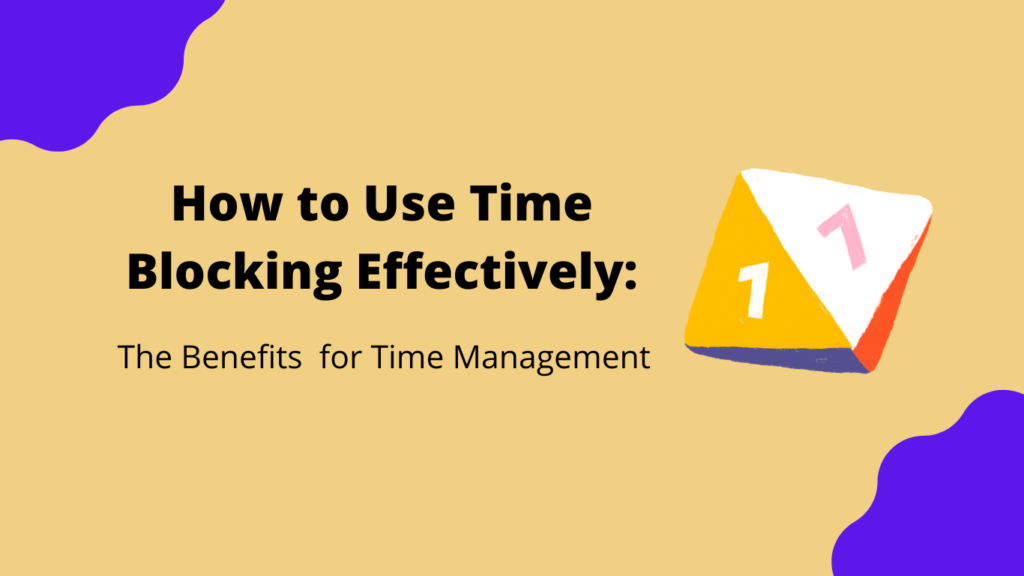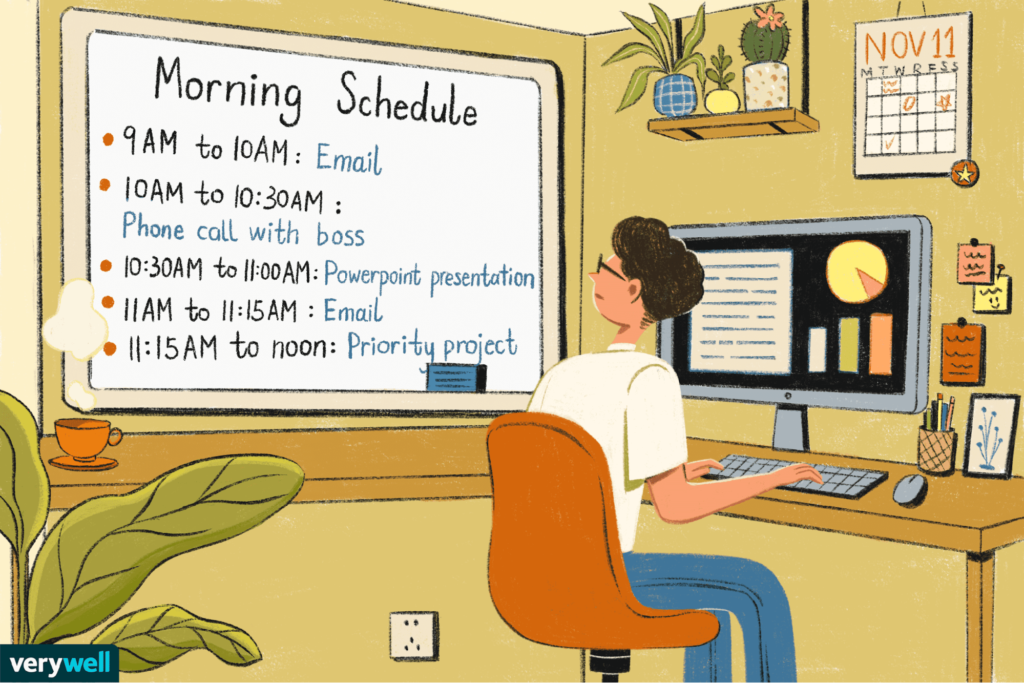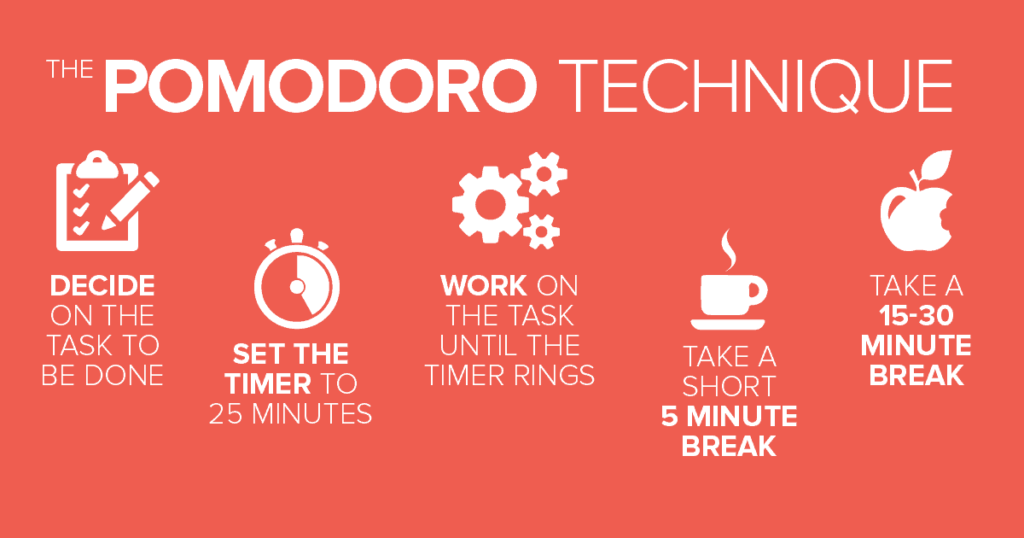Timeblocking

Do you ever feel like you’re always running behind schedule? That there’s never enough time in the day to get everything done? If so, you’re not alone. Due to this, over the years, scientists, entrepreneurs, and people, in general, have been on the quest to hack time and find the best time management strategies. We are getting tired of the infamous to do list!
One of these hacks is time blocking! Don’t you know what it is? Don’t worry, in this blog post, we’ll discuss time blocking and how it can help you use your time more effectively and finish multiple tasks in no time! Stay tuned.

Ah, time! That abstract concept that leads our lives and makes the world go around. Yes, it’s one of the most precious commodities we have and, unfortunately, also one of the scarcest. No matter how many time management hacks and tips we try to implement in our lives, it seems like there’s never enough time to get everything done!
However, we are not here to focus on problems, but rather on solutions. Basically, we are helping you to take back control of your time. And not only that, but it will also help you boost your productivity and finish multiple tasks in no time!
The Story Behind Time Blocking
Time blocking is a time management technique that was popularized by Cal Newport, author of the best-selling book Deep Work. The idea behind time blocks is to schedule specific time periods for specific tasks.
For example, if you need to write a blog post, you would block out two hours in your calendar specifically for writing that blog post. During that time, you would minimize distractions and stay focused solely on writing the blog post or other similar tasks.

This technique offers such a detailed level of planning that has been used by entrepreneurs, scientists, and other highly successful people for years and it’s now gaining popularity as one of the best time management strategies.
However, it’s important to remember that time block is different from other time management techniques like the Pomodoro Technique or time batching in that it allows you to block out large chunks of time for deep work avoiding you to lose time.
Pomodoro Technique vs. Time Blocking
The Pomodoro Technique is a time management method that was created by Francesco Cirillo in the 1980s. The idea behind the Pomodoro Technique is to break down work into 25-minute intervals (called “Pomodoros”) with five-minute breaks in between each interval.
After four Pomodoros, you would take a longer break (15-30 minutes). The Pomodoro Technique is a great time management technique for people who have trouble focusing on one task for an extended period of time.
The time blocking technique is similar to the Pomodoro Technique in that it also involves breaking down work into intervals. However, time blocks are usually much longer than 25 minutes (usually one hour or more).

It’s not that we are making these two techniques compete; it’s just not that one could be better for you instead of the other. Which one do you think will fit you best? While you think about it, let’s give you more details about time blocking!
Time Blocking: The Benefits
Numerous studies have shown that time blocking is an effective time management technique that can help you boost your productivity and finish important tasks. In fact, by 2014 Adam Grant, an organizational psychologist, and bestselling author had already written over 60 peer-reviewed articles.
All while hosting a podcast, being a TED Talk speaker, a Google consultant, and a bunch of other incredible stuff. Impressive, right? How does he manage, though? Simple: He batches his time!

Now, that was just one fine example of the benefits of task batching. Let’s discuss some more of them down below!

Helps You Focus on One Task at A Time
Blocks of time help you to focus on one specific task at a time by scheduling specific time periods for specific tasks. This way, you can minimize distractions and stay focused on the single task at hand.
Improves Your Time Management Skills
Time blocking is a great way to improve your time management skills. By scheduling time for a specific task, you learn how to better manage your time and group similar tasks, and avoid context switching.
Helps You Stay Organized
When you time block, you are essentially creating a schedule for yourself. This schedule will help you stay organized, get your tasks together, and ensure that you are completing all of the tasks that need to be done in a day.
Encourages You to Take Breaks
Research has shown that taking regular breaks can help improve your productivity, focus, and deep work. According to a Stanford study, a 20-minute stroll can boost creative thought, just look at the brain scan below!

As well, by setting aside specific times for breaks, time blocking can help you make the most of your free time and avoid burnout. In addition, having periodic free time can also help refresh your mind and body, making it easier to stay focused on your work.
Reduces Stress Levels
By time blocking, you are able to better manage your time and complete focused work, all while having more energy for your daily routine. This can help reduce your stress levels by ensuring that you are not trying to do too many things at once.
Increases Your Productivity
Time blocking increases your productivity by helping you to better use your time by avoiding shallow tasks and letting you know how long tasks take you. When you block out dedicated time specifically for certain important tasks, you are more likely to complete those daily tasks in a timely manner, without even needing a to-do list!
Get more out of your business
Get the best employee engagement content every week via mailing list
Helps with Goal Setting
When you use time blocking, you can better see how much time you have available to complete certain tasks and goals. This way, you can set more realistic goals and deadlines for yourself.
Are you ready to become the next Adam Grant? Let’s move on to how you can use blocks of time effectively!
How to Use Time Blocking Effectively 101
By now, you might think time blocking is not that hard, the thing is sometimes we know the theory, but the practice is a bit trickier. Therefore, let’s review some steps to rock time blocking.
Block Your Priorities
The best way to use time blocking is to start by creating a list of all the tasks that you need to do in a day. Once you have this list, you can start to group similar tasks together and block out time for each task.
For example, if you need to write a report, answer emails, and make phone calls, you could block out an hour for writing, an hour for email, and an hour for making phone calls.
Identify Your “Biological Prime Time”
Your “biological prime time” is the time of the day when you are the most productive. Chart your energy levels, like the chart below, for at least three weeks to determine yours. Then, when you have the most energy, schedule your most important, highest-leverage activities.

For some people, their biological prime time is in the morning, for others it is in the evening. Identify your own biological prime time and try to schedule your most important tasks during this time.
In the image below, Daniel Pink, author of “When: The Scientific Secrets of Perfect Timing” (get your copy here) provides us the 3 chronotypes for you to recognize yourself, what’s yours?

Have Themed Days
Of course, we will follow another great example of productivity, Elon Musk! This tech genius time blocks his day by having themed days, for example, he has a “design day” where he works on designing new products.
Theme days are when you focus on similar tasks for an entire day
For example, Monday could be your “writing day”, where you block out time to write blog posts, articles, or even work on that book you’ve wanted to write.
By having theme days, you can eliminate distractions and better focus on your most critical projects. In addition, this will also help increase your productivity as you will be able to complete similar tasks in a shorter period of time.
Create a Schedule
After setting up the theme of your day, create a schedule for yourself. This schedule will help you stay on track and ensure that you are completing all of the related tasks that need to be done in a day.
To create a schedule, start by finding time blocks that are available in your day. Then, determine what task you will complete during each time block. Once you have created your schedule, be sure to stick to it as much as possible.
But, Don’t Be Too Rigid, Make Time for Interruptions!
Interruptions are a fact of life, but that doesn’t mean they have to derail your productivity. Even if you are the best planner in the world, there will always be interruptions and things that come up unexpectedly. That’s why it’s important to make time for interruptions in your schedule.
And, don’t be afraid to move things around! If something comes up that you didn’t plan for, don’t be afraid to move things around in your schedule. This is one of the benefits of time blocking, it allows you to be flexible with your time.
So, if you have an unexpected meeting or phone call, simply move that task to another time block. By being flexible with your time, you can ensure that all of your tasks are completed without feeling overwhelmed.
Handle Yourself With a Calendar
One way to be more productive is to use a calendar to block off time for specific tasks. This can help you to better use your time, as you will have a set amount of time allotted for each task.
Additionally, it can help to prevent multitasking, as you will know that you need to focus on the task at hand during the blocked-off period. Time blocking can also help you schedule breaks so that you can take a few minutes to rest and recharge before starting the next task.
Rinse and Review
Time blocking is not a one-time thing, it’s an ongoing process that you should review regularly! Every few weeks, take a look at your time blocks and see if there are any changes that need to be made.
This could include changing the length of time for each task or even switching up the order of your tasks. By reviewing your time blocks regularly, you can ensure that you are using your time in the most effective way possible.
Time blocking sounds like the answer to our all-time management issues, but is it the right method for you?
Why Time Blocking Doesn’t Work For You?
Time blocking may not work well for everyone as it can lead to rigidity and inflexibility. Some people may find that time blocking leads to more stress, as they feel like they have to stick to their schedule no matter what.
If you are someone who prefers a more flexible schedule, time blocking may not be the right method for you.
Additionally, time blocking can be difficult to stick to if you have a lot of interruptions in your day. If you are constantly being pulled away from your tasks, it can be difficult to stay on track.
So, what do you do if time blocking doesn’t work for you? There are a few other options that you can try!
Use the Pomodoro Technique
As we told you before, the Pomodoro Technique is a time management method that can be used instead of time blocking. This method is based on the idea that if you break down your time into manageable chunks, you will be more productive.
To use this technique, start by setting a timer for 25 minutes. During this time, you will work on a single task without any distractions. Once the timer goes off, take a five-minute break to rest and recharge.
Repeat this process four times, and then take a longer break (15-30 minutes) before starting again.

Use the Eisenhower Matrix
The Eisenhower Matrix is a time management technique that can help you to prioritize your tasks. This technique was created by President Dwight D. Eisenhower and is based on the idea that not all tasks are created equal.
To use this technique, start by creating a list of all of your tasks. Then, assign each task a category based on its importance and urgency.
Tasks that are important and urgent should be completed first, as these are the most time-sensitive tasks. Tasks that are important but not urgent can be scheduled for later.

And finally, tasks that are neither important nor urgent can be delegated or eliminated altogether. By using the Eisenhower Matrix, you can ensure that you are completing the most important tasks first.
The 80/20 Rule
The 80/20 rule is a simple concept that can have a big impact on your productivity. Also known as the Pareto Principle, the 80/20 rule states that 20% of your efforts will result in 80% of your results. In other words, a small number of activities are responsible for the majority of your outcomes.
When it comes to time management, the 80/20 rule can be a useful tool for identifying which activities are the most important and deserve the majority of your attention. By focusing on the 20% of tasks that will yield the greatest results, you can maximize your efficiency and get more done in less time.

Final Thoughts
There are a variety of time management techniques that you can use to be more productive. Time blocking is just one method that you can try. If time blocking doesn’t work for you, there are other options that you can explore.
The most important thing is to find a time management technique that works for you and your lifestyle. Experiment with different methods until you find one that works well for you!
Remember:
- Try out different time management techniques until you find one that works better for you and your lifestyle
- Consider using the Pomodoro Technique or the Eisenhower Matrix if time blocking doesn’t seem to be working well for you
- Write out a list of all the tasks you need to complete in a day, and then prioritize them based on importance and urgency. Start with the most important tasks first!
How do YOU manage your time? Let us know!


